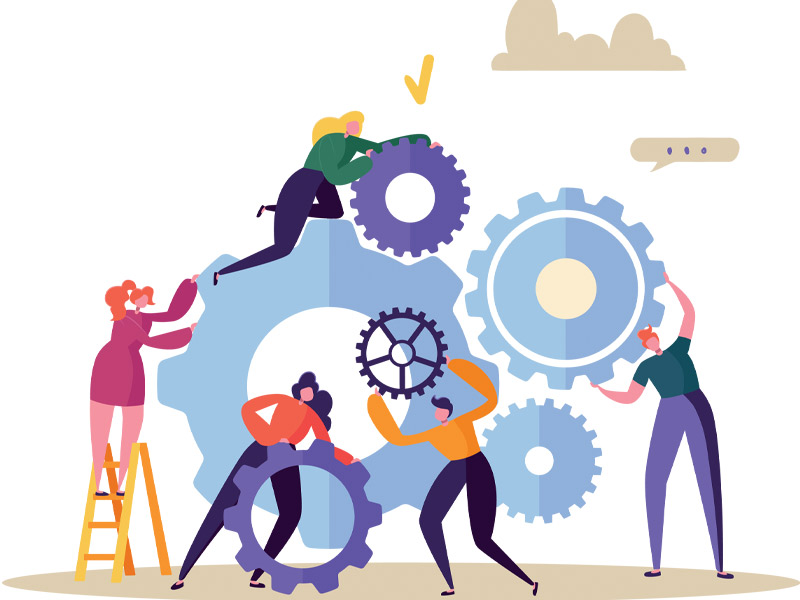

Employee resource groups have been a part of many organizations for several years, are usually created and operated by employees and evolve and grow over time. But at Kraft Heinz Canada, six fully-formed ERGs arrived at once.
“When our Canadian and U.S. businesses merged last year, the company thought one of the best ways to bring two cultures together was through what we call business resource groups,” says Chelsea Barnett, the organization’s global manager of diversity, equity, inclusion and belonging.
“At the same time, the Canadian business had a diversity and inclusion committee that had three subcommittees focused on race and ethnicity, gender and the LGBTQ2S+ community. The U.S. arm had six established, specialized BRGs.”
Read: Colliers focusing on gender diversity, ERGs to attract talent
To expand these six BRGs north, members of the Canadian diversity and inclusion committee assumed roles in each of the six U.S. groups. “We established a new leadership role on each BRG called the Canadian liaison, who’s responsible for identifying Canadian interests and making sure we are part of any conversation,” says Barnett, who acts in the role for the Pride BRG.
And Kraft Heinz is open to more BRGs. “If a proposed BRG supports a historically marginalized community, that’s a good first step. The second step is to create an inaugural leadership team who then come to our global diversity team for approval and assistance.”
ERGs by the numbers
• 58% of employees are unfamiliar with the concept of ERGs.
• Among those familiar with ERGs, only 55% report their employer offers them.
• 84% of all respondents express interest in joining an ERG if offered by their organization.
• 69% say they’d prefer to have ERGs that are specialized instead of more general.
Source: WerkLabs report, 2020
Once approved, the diversity team secures an executive sponsor for the group and helps establish an annual plan. “We want to identify a few clear goals right off the bat and set measurable targets for when and how they’re going to be achieved,” says Barnett.
Telus Communications Inc. was one of the first companies to establish employee-run ERGs. The first one, for female employees, was created in 2006. Since then, it has formed five more ERGs, with 8,200 workers across Canada participating.
Read: Back to basics on employee resource groups
“For anyone wanting to establish an ERG — or to make it flourish — it must have real meaning and goals for everyone who’s participating,” says Sid Sidhu, Telus Health’s senior strategy manager for global health solutions and the chair of Mosaic, an ERG that celebrates multicultural diversity and supports the immigrant population.
He also urges employers to ensure the right decision-makers are at the table from the beginning and that they establish a proper structure, noting ERGs depend on volunteers, so it’s important everyone understands who does what, is up to date on initiatives and feels like they’re a valued member of the group. “If those three things are done, the rest will seem easy.”
Uncharted territory
While ERGs were a part of the business landscapes at both Telus and Kraft Heinz for several years, they were uncharted territory for Bruce Power.
“We’re a little atypical in the fact that the idea to establish ERGs came from our management,” says Kelsey Kelly, the company’s organizational effectiveness specialist. “They asked if this was something people wanted and they’ve been extremely supportive helping to launch the initiative.”
Read: AstraZeneca Canada supporting LGBTQ2S+ talent with employee resource group
Last June, Bruce Power’s DEI team and a few dedicated volunteers like Kelly began forming two ERGs — the Women’s Forum and the Gender and Sexuality Alliance. Its Indigenous Network was established more than a decade ago.
The organization formed a DEI steering committee to create a governance framework and support the ERGs until they become self-sufficient, as well as to drive progress in a number of other areas. “They suggested leadership positions within the ERGs and we liked them,” says Kelly, who co-chairs the Women’s Forum. “They were admin support, education and training, events and celebrations, metrics and measurements and communications.”
Next, the steering committee assigned an executive sponsor to each ERG. “My advice to a new ERG is to continuously engage your executive sponsor,” she says. “They know the business and how to get things done.”
Read: RBC takes the pulse of its employee resource groups
Kelly also suggests employers write a terms of reference and survey their membership, noting that helped Bruce Power clarify its mission and understand its first priorities. The process presented a steep learning curve for everyone, but the lessons learned mean the organization is now planning two more ERGs — one with a focus on race and ethnicity and one centred on disabilities and accessibility.
“It’s still early days for the Women’s Forum, but I’m excited by what’s happening,” says Kelly. “It’s more than amplifying voices and making people feel like they belong. It’s about creating a better work experience for all staff.”
Moira Potter is a freelance writer.
